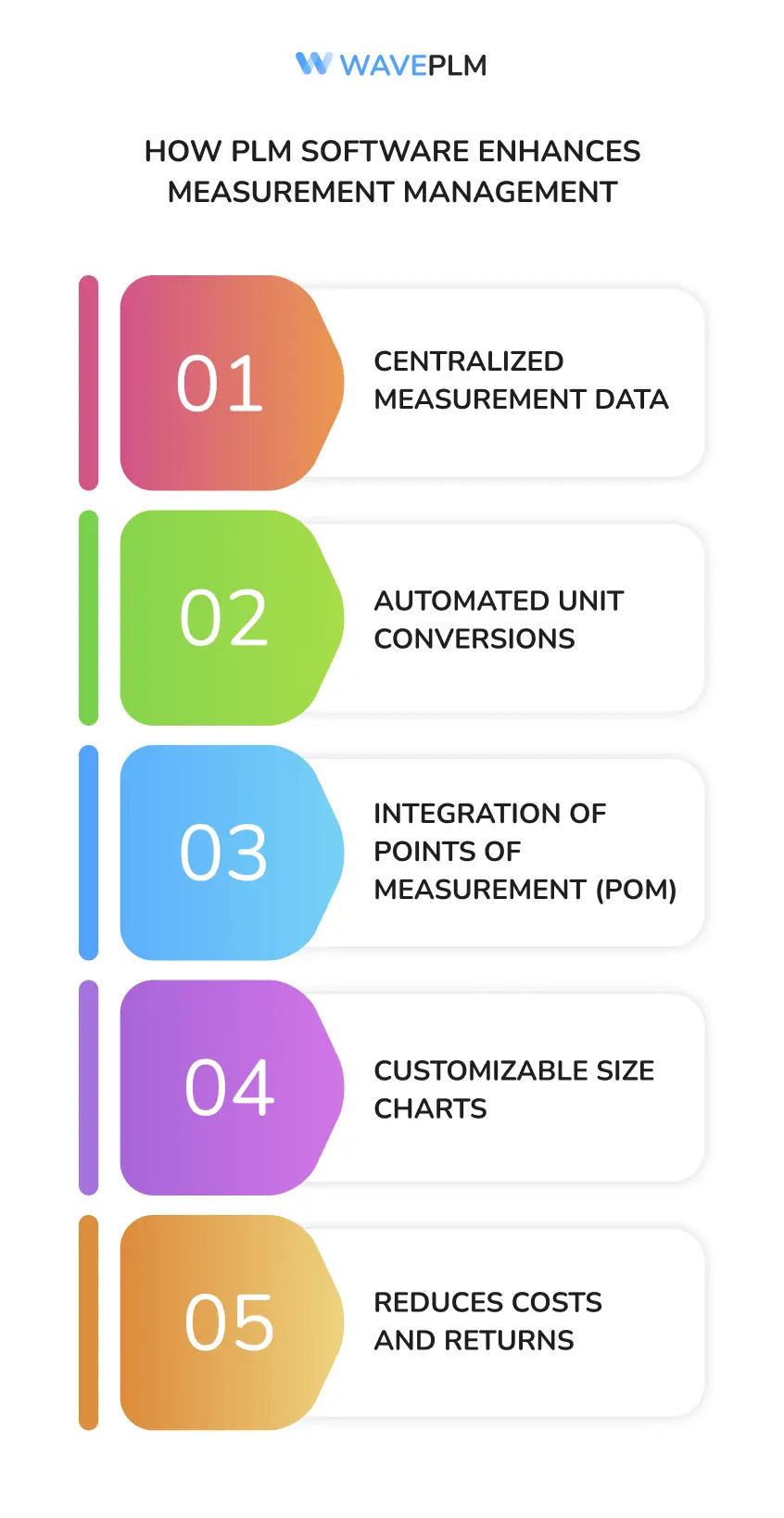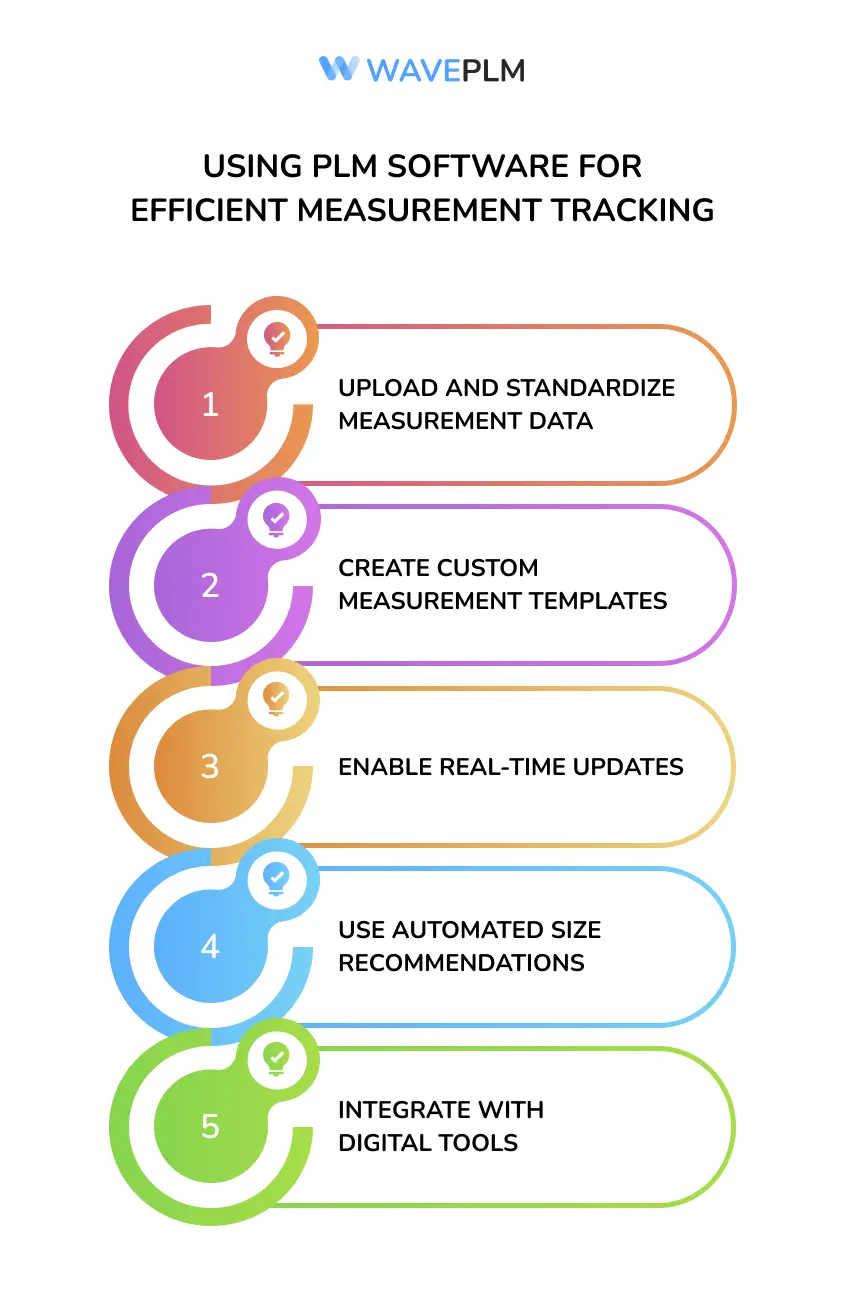
Accurate body and garment measurements play a crucial role in fashion product development. A mistake in a waist measurement or sleeve length can lead to ill-fitting garments, returns, and increased costs. Fashion brands need a reliable system to manage these measurements efficiently.
PLM software simplifies this process by centralizing measurement data, ensuring consistency across design, production, and quality control. A well-structured measurement system enhances workflow efficiency and helps fashion brands maintain accuracy across multiple markets.
Why Accurate Measurements Matter in Fashion
Garment measurements directly impact fit, comfort, and customer satisfaction. A well-maintained body measurement chart eliminates sizing discrepancies and ensures a seamless production process. Fashion brands rely on several charts for measurements, including:
- Body measurement chart – Standardized human body dimensions for accurate clothing fit.
- Pants measurements size chart – Precise waist size, hip measurement, and length measurements.
- Suit measurements chart – Key fit details such as sleeve length, chest, and side seam.
- Hip measurement chart – Essential for dresses, skirts, and trousers.
- Units of measurement chart – Converts data between different measurement systems for international production.
Managing these charts manually increases the risk of errors. A missing or incorrect measurement can lead to delays, added costs, and unsatisfied customers. PLM software eliminates these problems by providing a single source of truth for all measurements and streamlining the transition between different measurement systems used worldwide.
How PLM Software Enhances Measurement Management
PLM software transforms the way fashion brands handle measurements. Instead of tracking data on spreadsheets, brands use PLM to store and update measurement charts in real time. Here’s how it improves accuracy:
1. Centralized Measurement Data
Every department—design, production, and quality control—accesses the same measurement system. This reduces errors caused by outdated or inconsistent data. A unified system ensures that designers, pattern makers, and manufacturers work with the latest updates, eliminating confusion and preventing production mishaps.
2. Automated Unit Conversions
PLM software supports both the metric system and the international system of units (SI). Designers working with metric units can instantly convert measurements to inches, ensuring accuracy for global markets. The system also allows fashion brands to toggle between measurement standards without manual calculations, reducing errors and improving efficiency.
3. Integration of Points of Measurement (POM)
A well-defined POM list standardizes how garments are measured. Each garment has specific measuring points, such as shoulder width, sleeve length, waist measurements, and side seams. PLM software helps brands create detailed POM guidelines for each product, ensuring uniformity from design to production. Having a clear POM reference reduces miscommunication between design and manufacturing teams.
4. Customizable Size Charts
Fashion brands cater to different markets with unique size expectations. PLM software allows teams to manage product sizing efficiently by creating multiple size charts, ensuring a perfect fit for every customer. A well-structured size chart prevents discrepancies between various production facilities and simplifies quality control checks.
5. Reduces Costs and Returns
Incorrect measurements lead to costly mistakes. PLM software minimizes these risks by ensuring accuracy at every stage. Fewer sizing errors mean fewer returns and reduced costs in production and logistics. Brands can also analyze historical measurement data to identify recurring issues and refine their fit strategies for future collections.

Key Measurement Charts in PLM Software
Body Measurement Chart
A comprehensive body measurement chart includes essential measurements such as:
- Waist measurements
- Hip measurement
- Sleeve length
- Side seam
- Chest circumference
- Shoulder width
Brands use these details to develop clothing that fits a wide range of body types. Accurate body measurement data allows brands to refine their size charts and improve fit consistency across different product lines.
Pants Measurements Size Chart
Pants require precise fit adjustments. A detailed pants measurements size chart in PLM software includes:
- Waist size
- Hip width
- Inseam length
- Outseam length
- Thigh circumference
- Leg opening width
Precise pant measurements help brands deliver well-fitted products and reduce customer dissatisfaction due to poor sizing.
Suit Measurements Chart
A well-structured suit measurements chart ensures formal wear fits correctly. Important points include:
- Chest width
- Sleeve length
- Waist measurements
- Jacket length
- Shoulder width
- Trouser rise
These details help brands maintain consistency in formalwear production, ensuring that each suit matches its intended size and style.
Units of Measurement Chart
Global brands must navigate different measurement systems. PLM software includes a units of measurement chart that toggles between metric and imperial units instantly, eliminating confusion for international teams. Automated conversions prevent mistakes and ensure accuracy across all production facilities.
Additional Measurement Charts
Brands may also require specialized measurement charts for specific clothing types, such as:
- Swimwear measurement charts – Includes chest, waist, hip, and torso length.
- Footwear measurement charts – Covers foot length, width, and arch height.
- Children’s wear measurement charts – Takes into account growth allowances and movement ease.
A flexible PLM system allows brands to customize their measurement tracking and ensure product consistency across all categories.
Using PLM Software for Efficient Measurement Tracking
PLM software not only organizes measurement data but also streamlines the workflow. Here’s how brands can use it effectively:
1. Upload and Standardize Measurement Data
Enter all body and garment measurements into the PLM system. Ensure they align with industry standards to maintain consistency across products. This creates a structured measurement reference that all teams can rely on.
2. Create Custom Measurement Templates
Brands can define templates for different clothing categories. This helps teams manage product measurements efficiently without starting from scratch. A reusable template improves consistency in production.
3. Enable Real-Time Updates
Designers, pattern makers, and manufacturers work with live data. Any changes in measurements reflect instantly across teams, reducing communication gaps. An automated update system ensures that teams always have access to the latest information.
4. Use Automated Size Recommendations
Advanced PLM systems offer AI-driven recommendations, adjusting measurements based on previous fit and customer feedback. Brands can analyze fit-related data and make real-time modifications to improve future collections.
5. Integrate with Digital Tools
PLM software works with 3D modeling tools and virtual fittings, helping brands test and refine measurements before production. Digital samples allow teams to make pre-production adjustments without physical prototypes, reducing material waste.

Conclusion
Accurate measurements define a brand’s success in fashion. A small mistake in waist size or hip measurement can lead to a poor customer experience. PLM software helps fashion brands manage body and garment measurements efficiently, reducing costs and ensuring a perfect fit. By centralizing data, automating unit conversions, and standardizing size charts, PLM software supports seamless product development.
Fashion brands investing in PLM gain a competitive edge by delivering consistent sizing, reducing errors, and streamlining production. The future of apparel design depends on precision, and PLM software makes that possible.
A good measurement system is not just about data. It is about making a smooth, efficient, and cost-effective workflow. This workflow helps both the brand and the customer.





Leave a Reply